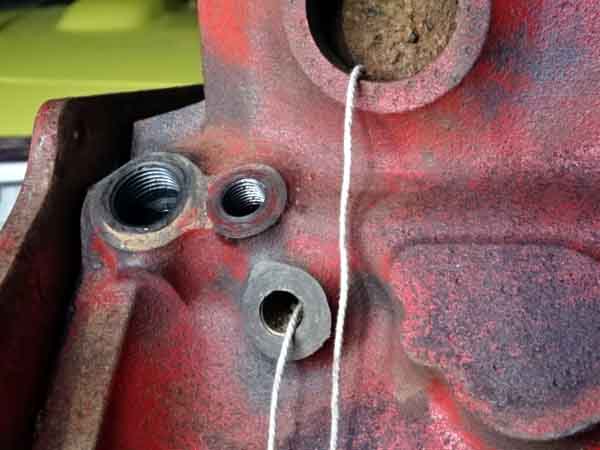Locating the date mark, relatively easy with no emissions kit and the inverted oil filter:

Although a Gold Seal engine the engine number prefix of 48G is correct for the 1972 year of manufacture of the car, and appears to be 17, D, 1972:

A scan of a BL document translating the codes into actual dates, the month letter 'I' is not used. Only covers 1970 to 1981 but apparently the system was in use from 1953. Shows a single digit for year (with 1981 being the same as 1971), prior to that two digits were used in MGB examples. However many examples of MGB (and MGA) engines do not have this date code, and below there are examples of '70' and '71' for the year: (Fred Horner)


However this 18G 3-bearing engine has just a '2' where the date code would be i.e. directly under the oil filter housing position. '12H750', some odd numbers higher up. The flange under the dip-stick hole is full length:
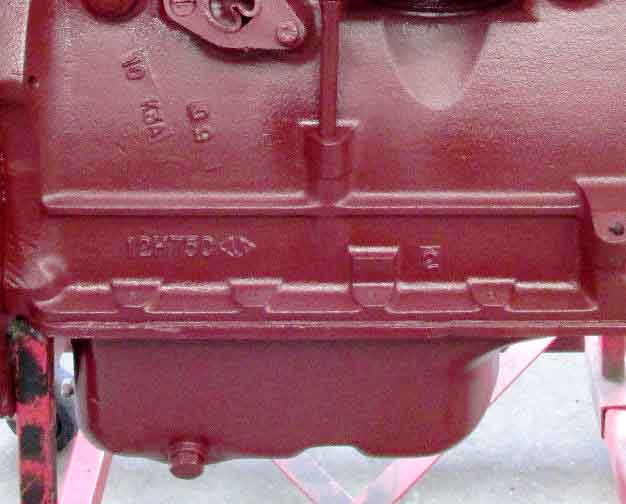
The above block has a logo beside the casting number, representing the Wellingborough Iron Foundry, even though it looks more like an enclosed 'M':

Healey 3000 manifold, with the logo the right way up relative to the casting number: (Fred Horner)
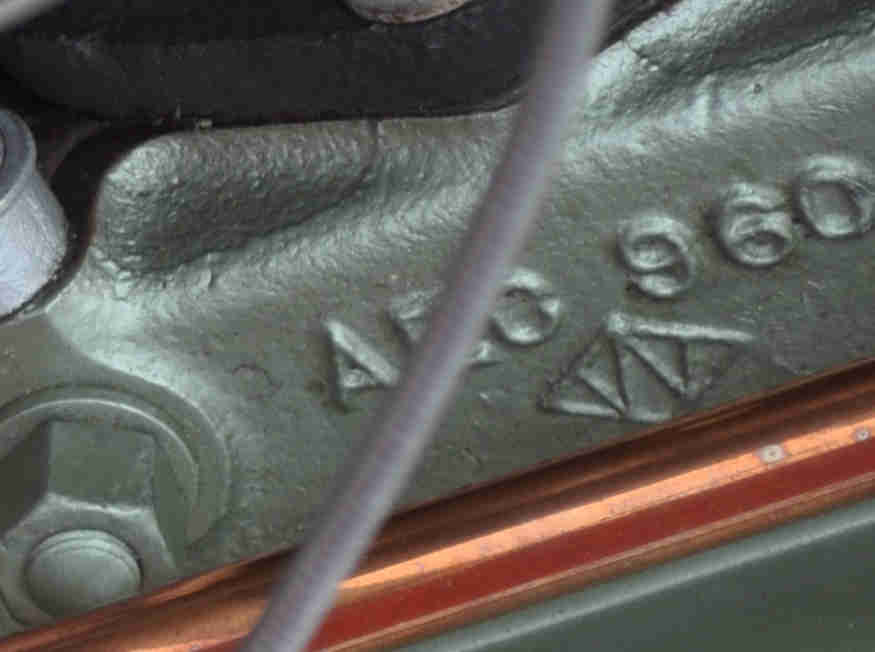
Examples of 'MM' (Morris Motors) and the 'W' in the lozenge on T-Type blocks, again the right way up: (MG Car Club T Register

Info from Nick Herwegh, Netherlands, via MG EXperience and Fred Horner:
The foundry became part of the Nuffield Organization during the late forties.
In the days of TD/TF production, engine machining/assembly was at the Morris Engines Branch at Courthouse Green in Coventry (or maybe at the Foleshill Works, the ex-Riley factory which became part of Engines Branch when Riley production went to Abingdon (Foleshill being "around the corner" of Courthouse Green))
Abingdon in the fifties was assembly only.... as it ended
The reason the Nuffield Organization bought the Butlin Foundry at Wellingborough was because they needed extra casting capacity for the Nuffield Tractor production. Especially large castings as tractor chassis and engine blocks. (See page 250 of Andrews and Brunner's "Life of Lord Nuffield" among others)
If you look at a Nuffield tractor engine or chassis you'll find exactly the same casting logo. Now it's hard to maintain that these parts were originally meant to be in a Wolseley car.... ties in with my understanding that the B-series was a development of a tractor engine
To be complete: the Wolseley 4/44 had a production run of almost 30,000 units.
My GUESS is that the earlier MG blocks (the ones with the MG logo) were cast at the original Morris foundry at Courthouse Green. But again; that's just a guess.
Apparently BL closed the Wellingborough foundry in 1981, i.e. about the same time as Abingdon, and again like Abingdon no strike history unlike many other factories. This Hansard Commons question from the local MP wonders "whether that is one of the reasons why BL chose Wellingborough for the chop, knowing that the workers there are not so likely to be as bloody-minded or militant as others in the group."
Examples of date strips from a 57/58 ZA/ZB, and an MGA with a 'BP15GB' engine: (Fred Horner)

MGB 3-synch gearbox date stamp left, 1976 4-synch right: (Fred Horner)

All these strips conform to the requirements even though they don't conform to the BL document.
Similar examples on an MGA 16GA engine: (Fred Horner)


This also has some characters upside down forward of the filter mount (image inverted for clarity). Cast by 'Bob'?
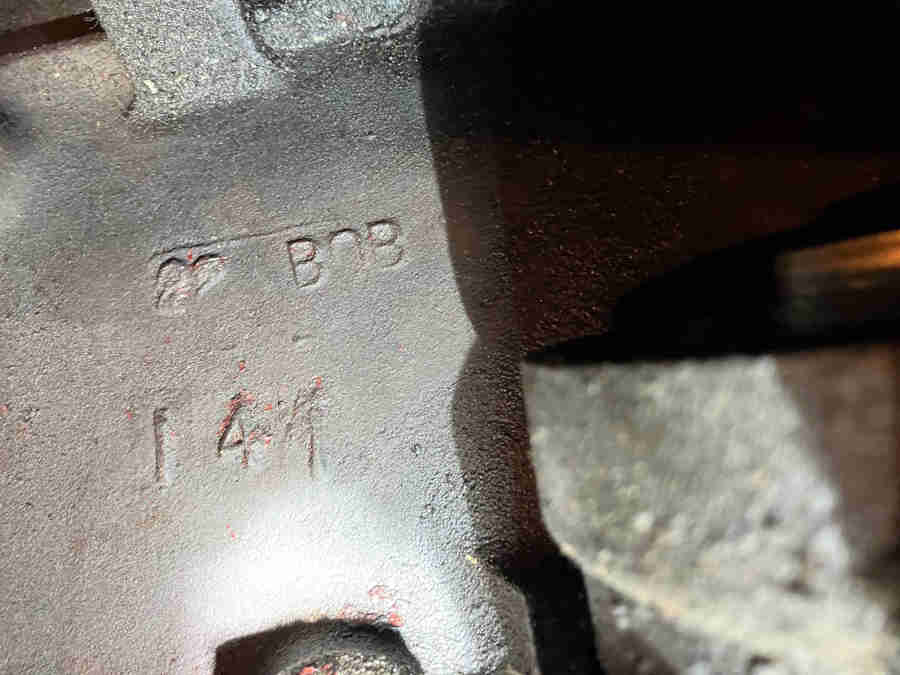
Back to MGB engines, probably 13, E or F, 1966, with an engine number of 18GB i.e. 3-bearing. Three '12Hnnnn' numbers, and 'AF2'. Flange under the dip-stick hole only going forwards:

Another 18G/Gx block with the same three '12Hnnn' numbers as above, but this time 'AF1'. Date code indicating 1967, so an 18GB or GD (Ryan Foster, USA):

A 1967 18GB - is that a digit '1' or a letter 'I' in the month position? Both would be counter to the BL document above: ('Kevin')

Four more examples of digits where the month letter is supposed to be, the first two are from the head and block of the same engine, the other two are blocks: (Fred Horner et al.)

This engine has 1970 on the dating code, so an 18GG to GK, but a single 12H3248 casting number and 'AF5' (Mustang Shire):

A five-bearing 18GH (from the engine number tag, so Oct 68 to Aug 70), again no date code or anything else under the filter. Very different numbers at the left including '12H3503' and the West Yorkshire Foundry mark, no 'AFn' number, and rectangular bosses for the sump screws instead of rounded:

An unknown block from Stephen Howden. Clearly dated 1971 (which goes against the BL document above), and 12H3503 AF2, so could be 18GG/GK or 18V. But on the other side ...
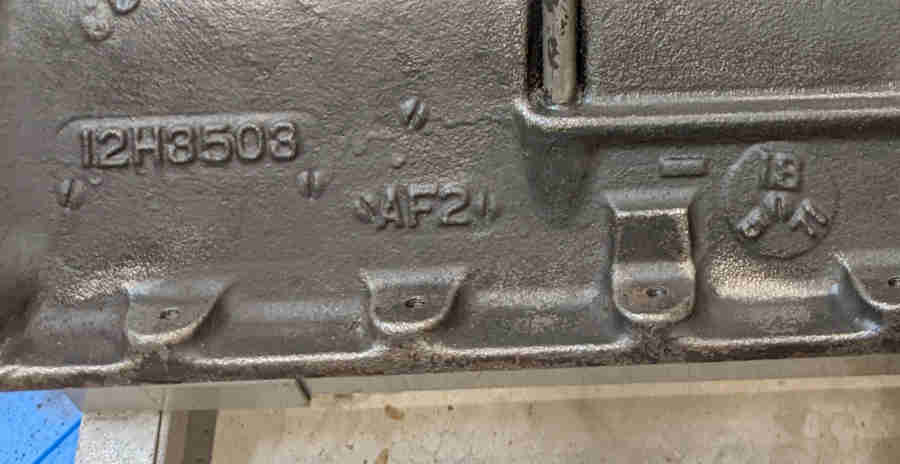
... an unpierced moulding for the mechanical fuel pump. Clausager says one of the differences on the 18v is that this was pierced, so the implication is that 18Gx weren't, making this an 18GG/GK. Another indicator is 'MOWOG' (above the same AF digit as on the other side), which seem to be on 18Gx but not 18V:
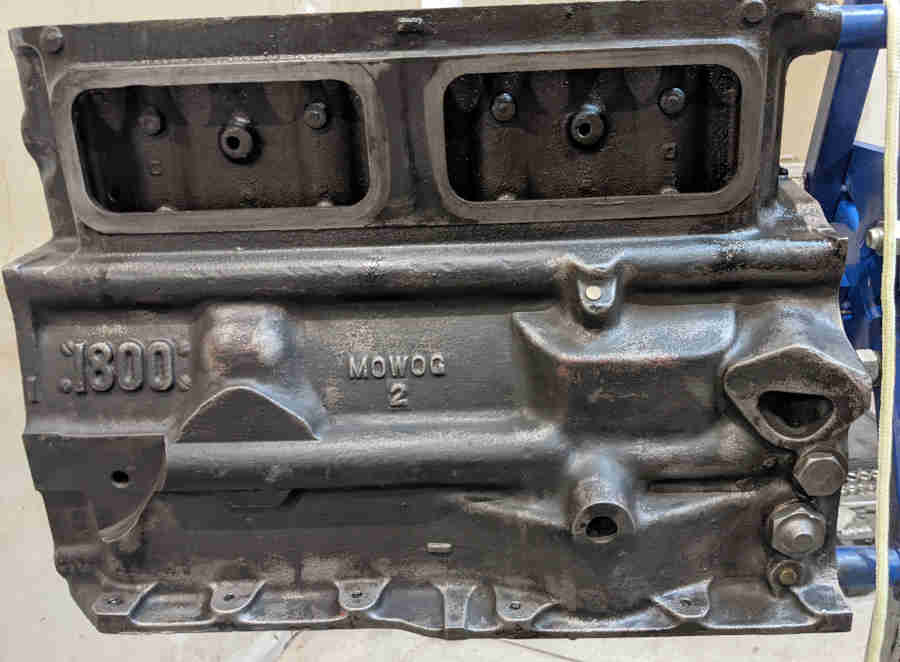
If that's true then it looks like the year indicator in the date code changed from two digits to one for the 18V as well. It would be interesting to see an early 18V as they started in August 1971 to see what the year indicator is, and the fuel pump boss.
Another interesting thing with the AF numbers is that the same AF digit on the distributor side appears under the 'MOWOG' on the tappet chest side in the above example, and Fred Horner has two blocks that are the same - a February 69:

And a November 71:
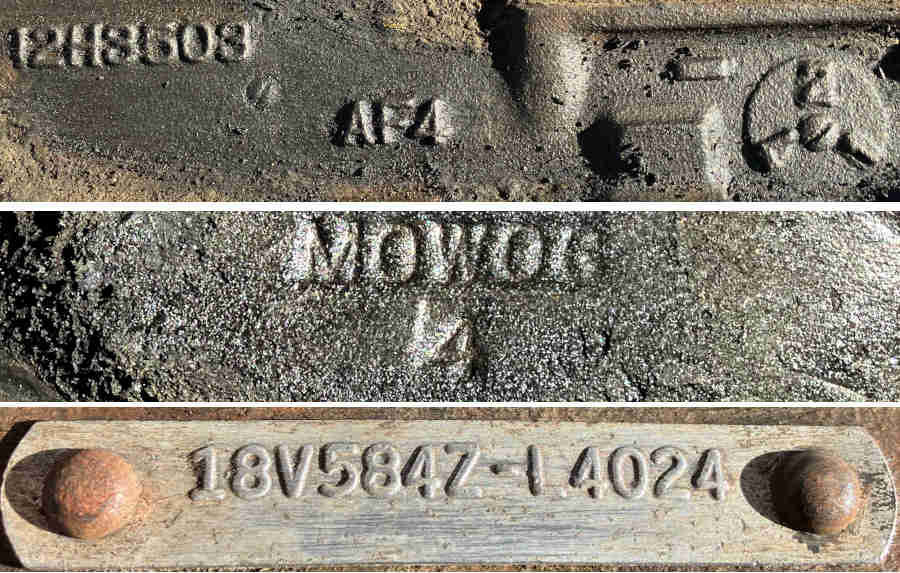
Probably 29, L, 1973. Engine number and originality to car not known.:

And yet this 18V673Z (going by the engine number tag) i.e. August 72 to September 74 has no date code:

Barely legible - but the year digit looks more like a 5 than a 6, the engine number dates to about October 76 so the casting could be from late 75 or early 76:
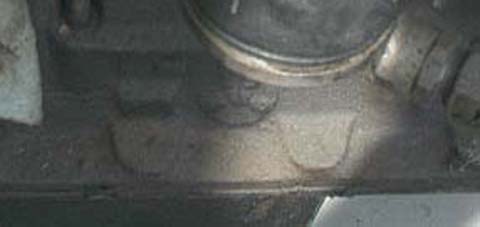

An 18V block with '12H3503' on two rows and 'AF1', and a date code indicating 1975, i.e. an 18V 846/847, 18V 797/798, or 18V 801/802. None of the other markings as on the previous engine. Back to rounded sump screw bosses: (Jim Bronson, Canada):

I've seen two examples where CAM1628 replaces the 12H numbers, with date wheels showing 1975 as in the next picture, and 1976: (John Fraioli):


Another '12H3503' with the other numbers being different and no date code, with an 18V658 engine number i.e. from a Marina. The 'WYF' at the bottom indicates West Yorkshire Foundries, part of the BL empire until 1986: (Mark Jones in Canada)

Three West Yorkshire Foundries 18V801, used from June 75 to June 76 for America. No circular date codes but a possible dating strip above the casting numbers:

The strip of characters near the top has a '5' on the right in both cases, is this the WYF dating info? Another WYF block (engine number unknown), but no digit at the end of the strip. Different digits above and to the right of the strip in all of the WYF blocks:

Block and head codes indicating November 75 cast in a car with a late December 75 build date. Too soon to be the original engine for the car?

Could be, but here's another showing 8th November 1968 in a car with a chassis number that dates it to late December 68 (build date not available):

And another one from Fred Horner - June 74 casting with a July 74 chassis number plate and an engine number that dates to the same period (final serial number digit unclear):

One of two 18V/801-802AEL engines from December 75-built North American cars without date codes: (Bill Etter)

An 18v883 of Jun 76 to Oct 80, date code with a single '7' indicating 77. The same '12H3503' (but looks like 3508, on a single row) as above, and 'AF5':

18V884 with 6, ?, 1977:

There is information about WYF on several Jaguar sites, and one of them has this picture (I bet Jaguar owners aren't impressed with the octagon!):

Another Jaguar example, a 1980s alloy V12, simple 'WYF' logo and same dating (?) strip:

The 18GB, 66 dated block (as in the top picture on this page but before degreasing) with no position for the mechanical fuel pump:
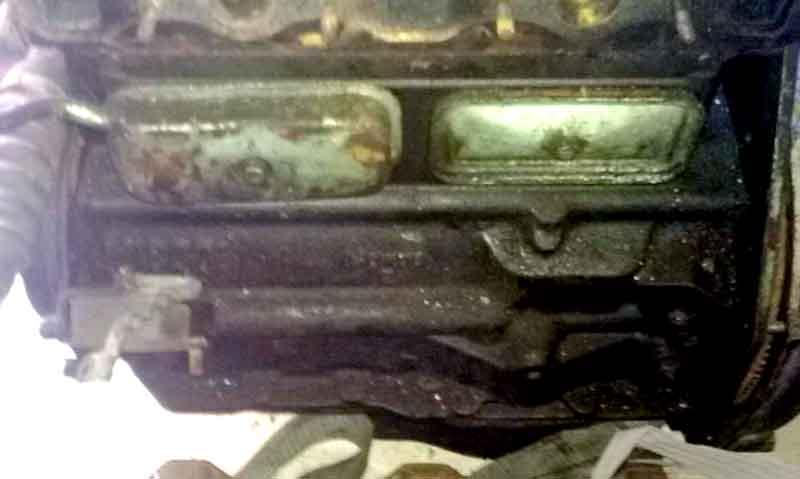
The 18GG to GK 70 dated block with no position for the mechanical fuel pump and with the 'MOWOG': (Mustang Shire)

The fuel pump aperture - Clausager indicates this was new for the 18Vs - and no 'MOWOG' on an 18V engine with year code '73' and 12H3503: (Duane Timbers, Canada):
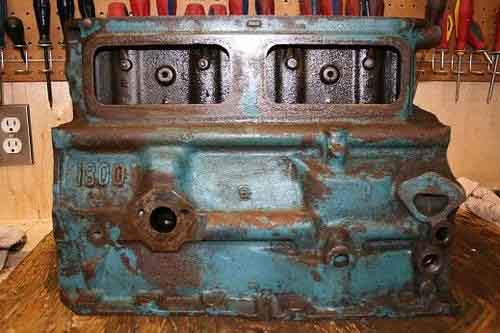
An unknown engine with year code '71' and casting 12H3503 AF2 on the other side, 'MOWOG' and an unpierced moulding for the fuel pump this side. The implication of all that is that it is an 18GG/GK, and in fact an 18GK as the head (also dated 71) has air-injection holes: (Stephen Howden)

Even odder is this one, with no provision for a distributor, and a question posed by William Revit in Tasmania. It's a B-series, not a diesel, so what is it? (Ignore the string, that was just to demonstrate the hole below the two oil ports is the block drain port).
